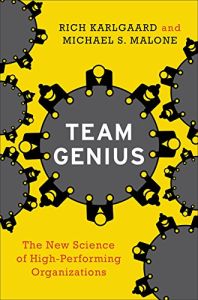Join getAbstract to access the summary!

Join getAbstract to access the summary!
Rich Karlgaard and Michael S. Malone
Team Genius
The New Science of High-Performing Organizations
HarperBusiness, 2015
What's inside?
Humans naturally form groups of different sizes for different purposes. Learn how to uncover and accelerate the genius they harbor.
Recommendation
Business journalists Rich Karlgaard and Michael S. Malone discuss the new science behind effective teams and why team size matters. They cover how diversity affects teams, why too much or too little conformity kills a team, and how to identify and deal with destructive team members. Karlgaard and Malone emphasize having the right number of people on your team, yet they report that cohesion matters more than head count. Their chapters on “pairs” and “trios” are especially fascinating. Pairs generally endure, but adding a third member often causes chaos. Groups of four or more tend to be stable. Larger groups have their own special parameters. getAbstract recommends this intriguing, revealing study to team builders, team leaders, professors, coaches, parents, entrepreneurs and investors.
Summary
About the Authors
Forbes magazine publisher Rich Karlgaard is an entrepreneur, journalist and speaker. Michael S. Malone is a journalist, technology writer and entrepreneur.




















Comment on this summary